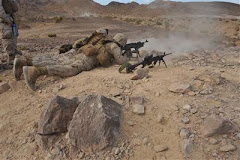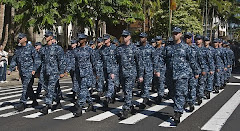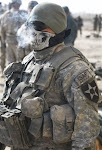I and many other people were a little surprised when the news broke on a Sunday evening in May 2011 that al-qaeda founder and terror mastermind Osama Bin Laden had been killed by U.S. forces. Ten years had passed between the 9/11 attacks and his reckoning, but Kathryn Bigelow's film "Zero Dark Thirty" helps explain the delay. The first two hours of the film is much more intelligence procedural than thriller and the methodical pacing may turn off less interested viewers. But just when you have had enough of angry looks and internal CIA politics the viewer is rewarded with the payoff.
After more than seven years of tracking down one dead end after another a relentless CIA analyst is finally able to put the pieces together. She is 95-100% sure her prey is living in a nondescript, but fortified house in a quiet Pakistani town. After months of handwringing the Obama administration orders a raid on the compound and as the cliche goes - the rest is history. Zero Dark Thirty is too long and deliberate to work as a thriller, but it does provide useful insights into controversial CIA tactics like enhanced interrogation techniques. I came away with a renewed appreciation of the anonymous intelligence and military personnel who have and continue to work so hard to keep the rest of us safe.
Monday, April 22, 2013
Friday, April 19, 2013
Long Live the Revolution
There seems to be a cadre of national security and military affairs analysts who believe the movement started in the 1990's known as the Revolution in Military Affairs (RMA) is dead and good riddance. This incorrect notion is at partially fueled, I suspect by their disdain for Secretary Rumsfeld, perhaps its most high profile proponent. Anyone who has been paying attention for the last ten years should know that even if the label RMA has fallen out of favor, the tenets of the philosophy continue to be implemented including increased reliance on air power, smart munitions, networked command and control capabilities and smaller, lighter ground forces.
Its true that Secretary Rumsfeld made a lot of enemies at the Pentagon, but many of them parted ways with him years before 9/11 or OIF. For example, there were a number of high-ranking officers in the Army who pushed very hard for the canceled self-propelled cannon known as the Crusader. Soldiers understandably want heavy fire power to support their operations, but the secretary and other argued that big, heavy cannons were becoming less necessary in light of the advances in attack helicopters, attack planes and smart munitions.
If the detractors lost faith in RMA because it did not turn out to be a sliver bullet or a panacea then shame on them for not having more realistic expectations. There is no magic, just hard decisions and hard work that will hopefully result in the most effective military possible.
Its true that Secretary Rumsfeld made a lot of enemies at the Pentagon, but many of them parted ways with him years before 9/11 or OIF. For example, there were a number of high-ranking officers in the Army who pushed very hard for the canceled self-propelled cannon known as the Crusader. Soldiers understandably want heavy fire power to support their operations, but the secretary and other argued that big, heavy cannons were becoming less necessary in light of the advances in attack helicopters, attack planes and smart munitions.
If the detractors lost faith in RMA because it did not turn out to be a sliver bullet or a panacea then shame on them for not having more realistic expectations. There is no magic, just hard decisions and hard work that will hopefully result in the most effective military possible.
Friday, April 12, 2013
U.S. Army: 2043
What will the U.S. Army be like in the year 2043? It might seem like a long way off to some, but Pentagon planners are hard at work figuring out what shape its ground forces need to take to stay preeminent in the coming decades. There are two main challenges that have to be addressed: the first is the pressure of shrinking budgets for the foreseeable future and the second is China's increasing defense expenditures to create a military capable of projecting power into the South China Sea.
Asking the Army to do less with more is a bit cliched, but it is unfortunately true. It appears that one of the ways the Pentagon will deal with this is to shrink the forces while moving ahead with replacing and updating equipment and systems. This can work up to the point where the Army finds itself without enough infantry and armor brigades to carry out relatively large-scale and sustained operations against for example, Iran and terrorist groups in the Horn of Africa. No one really knows what the exact numbers are, but recent experience with OEF and OIF suggest the point has already been reached.
The Pentagon will have to come to terms with the economics of men versus machines - how many combat brigades it can trade for new helicopters and tanks.
Asking the Army to do less with more is a bit cliched, but it is unfortunately true. It appears that one of the ways the Pentagon will deal with this is to shrink the forces while moving ahead with replacing and updating equipment and systems. This can work up to the point where the Army finds itself without enough infantry and armor brigades to carry out relatively large-scale and sustained operations against for example, Iran and terrorist groups in the Horn of Africa. No one really knows what the exact numbers are, but recent experience with OEF and OIF suggest the point has already been reached.
The Pentagon will have to come to terms with the economics of men versus machines - how many combat brigades it can trade for new helicopters and tanks.
Subscribe to:
Posts (Atom)





